Editor's Note:
AI, digital life, space travel... The future is coming at an unimaginable speed.
At this crucial moment when China has embarked on a new journey to comprehensively build a modern socialist country, such rapid development and transformation not only bring vast opportunities and prospects, but also unpredictable challenges and problems.
These challenges and problems, ranging from the future of human survival, the transformation of local development, to the life and death of a family or a stray animal, could be key topics that trigger social discussion. Each debate surrounding these topics is an inevitable pain point on China's path to pursuing high-quality development.
Against this backdrop, Global Times has launched the Deep Focus series, focusing on specific issues in current social development. Through detailed investigation and research, we aim to uncover the root causes behind these problems, seek solutions, and engage with relevant parties and sectors to find keys to unlock these complex issues.
This is the first installation of the series. In this article we focus on the transformation dilemma of Chinese private zoos and try to find a way out for them.
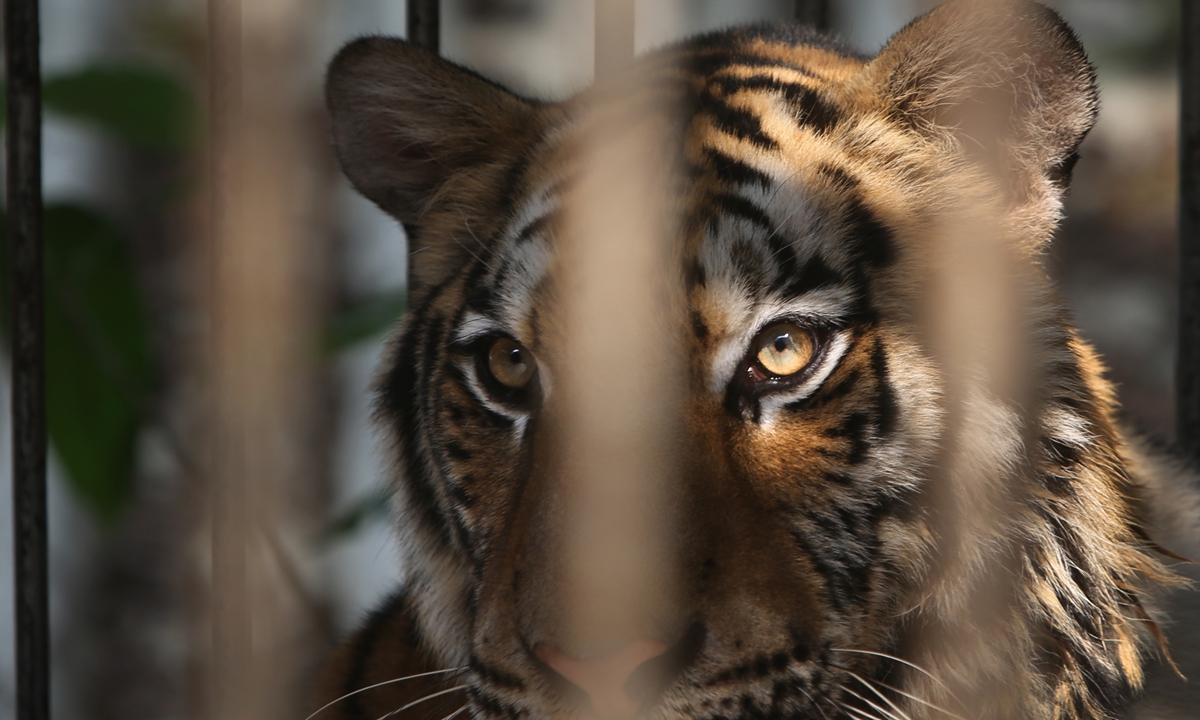
Picture shows a Siberian tiger in a cage. The tiger belonged to the circus at Guangzhou Zoo, which was shut down on August 31, 2017, after 24 years of operation. Photo: VCG
The first zoo I have ever visited is the one in my home county - a place among China's top 100 counties in East China's Jiangsu Province. That was almost 20 years ago, but the spiritless tigers and lions and their stinky cages in the zoo still pop into my head every time I see any news related to captive animals or visited any zoo, Xu Yamei (pseudonym) told the Global Times.
I visit zoos out of curiosity for wildlife. Animals deprived of their natural habitat were the last thing I looked forward to seeing in a zoo and I believe so it was for many others, said the 33-year-old woman who works in Beijing.
Xu is a representative of Chinese people who were shocked by the deaths of 20 Siberian tigers - an endangered species under China's top-class state protection framework - as well as some other rare animals in recent years in a wild animal zoo in Fuyang, East China's Anhui Province.
The issue soon made a splash on Chinese social platforms and triggered a heated discussion over
the conditions and transformation of private zoos across the country.
According to investigations conducted by local authorities, the Fuyang wild animal zoo is privately owned and had previously red flagged on several occasions, including land use disputes, which led to issues of animals being introduced to enclosures which did not meet environmental protection standards. At the same time, the zoo has repeatedly violated regulations while taking risks to meet rising commercial pressure.
Although the zoo has been ordered to address a number of problems, the news of animal deaths has brought the issue of animal protection to the forefront of public discussion.
If the zoo can meet all requirements after rectification, the animals there will most likely be allowed to remain in the facility. Should the zoo fail to meet the standards after rectification, it will be ordered to close, and the animals will have to be transferred to other locations.
"The animals will be affected either way," Sun Quanhui, a scientist from the World Animal Protection organization, told the Global Times.
Sun believes that the Fuyang wild animal zoo is not an isolated case, but an epitome of many other wildlife parks in China that are struggling with a range of operational and management problems.
So, the question is, do we still need private zoos?
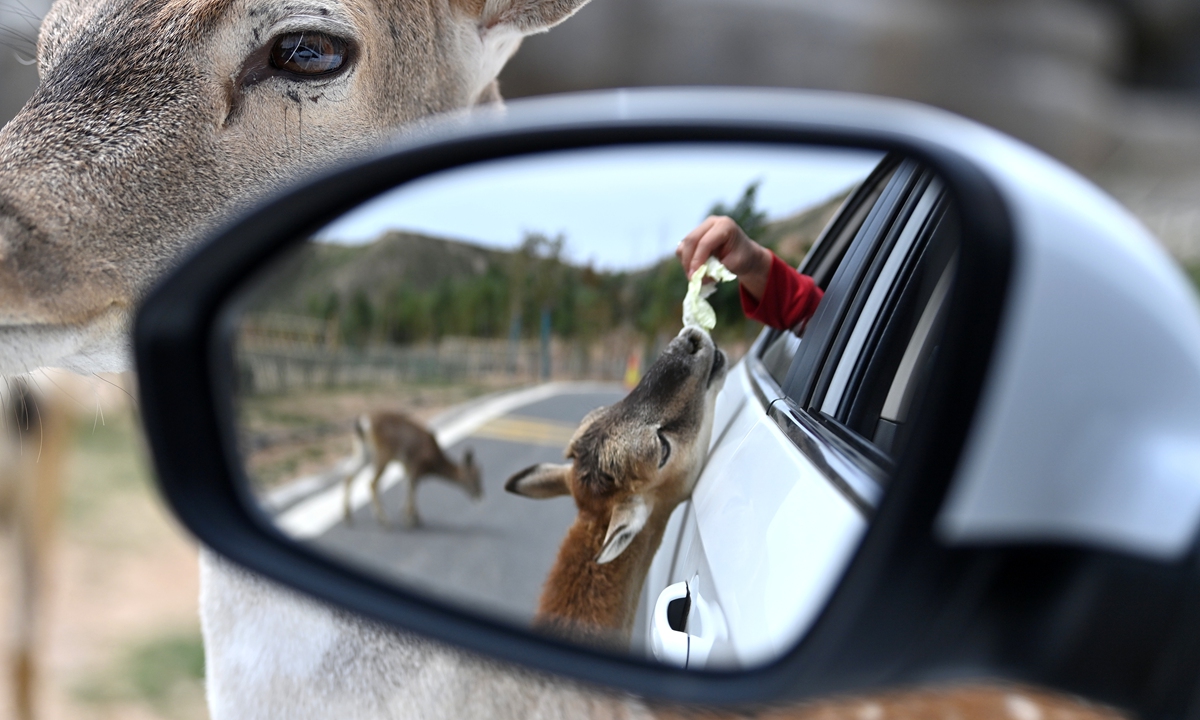
Visitors feed a deer in a wild animal park in Lanzhou, Northwest China's Gansu Province, when they drive through the park on September 4, 2022. Photo: VCG
Fading market There are both state-owned and private zoos in China.
State-owned zoos like the Beijing Zoo that were mostly established in the early days of the People's Republic of China. They are usually located in provincial capital cities and managed by local forestry and grassland bureaus. They have rare animals, and their main responsibilities are education, research, animal breeding, and conservation.
These zoos derive funding from local government revenue and their expenses are covered by government allocations according to budget measures. But governmental allocation does not guarantee a sure bet. Some public zoos have been forced to restructure and become private enterprises during the process of China's market reform.
Along with the opening of the market and the development of the private economy, private zoos emerged across China's small cities and counties. These zoos tend to be built in suburban areas. The ticket prices and investment requirements within these zoos are more flexible and varied than those in public zoos. However, many small-scale private zoos, especially those in small-cities and counties, have often fallen short in providing suitable habitats for animals.
The annual registration of enterprises related to wildlife parks in China reached a small peak in 2007, with more than 30 new additions throughout the year, according to jiemian.com. The number continued to climb from 2015 to 2020, with 40 new additions in 2019, according to the report.
Searching "wild life park" on Chinese corporate information platform Tianyancha on Thursday, 4,373 results were identified by the Global Times, of which 4,303 were private companies.
It is estimated that more than 90 percent of these wildlife parks are operating at a loss according to the data published in a number of media reports.
According to a report on industry information consulting website chyxx.com, the market size of China's zoo industry continued to increase from 2014 to 2019, but experienced a significant decline from 2020 to 2022.
According to the report, the Chinese zoo market size reached approximately 69.7 billion yuan in 2022, a year-on-year slump of 12.1 percent. Ticket revenue accounted for only 5.6 percent of the market size, while catering and other services accounted for 94.4 percent.
Outside some large wildlife parks such as Chimelong Safari Park in South China's Guangdong Province, the operating profits in the industry have been reportedly declining over recent years, especially given the impact of the COVID-19 epidemic, according to industry insiders.
Visitor dramatically fell during the epidemic, while the cost of day-to-day operations of zoos became an increasingly acute issue. In 2021, the Nanjing Hongshan Forest Zoo gained public attention after calling for public donations to "adopt" their animals as the zoo suffered a deficit of over 30 million yuan in 2020 alone, accounting for 40 percent of its yearly income in previous years, taking the zoo to a place that it could not afford to pay its employees.
Another important reason to the shrinking market is product homogenization, fierce competition, outdated park services and a greater emphasis on animal protection after an extended run of expansion and development of the market, observers pointed out.
Some zookeepers told jiemian.com that the salaries and benefits of employees in private zoos remained very low (only 3,000-4,000 yuan). The recruitment process is also overly casual, and there is no detailed and comprehensive safety training for new employees, leading to a growing number of management issues in zoos and wildlife parks.
Live animal performances remain a controversy still haunting Chinese zoos. In 2023, some netizens exposed that White Tiger Mountain Wildlife Park in Juye county, Heze City, East China's Shandong Province, located 300 kilometers north of Fuyang, was illegally keeping a national first-class protected animal, the Asian elephant, for lives performances. Photos circulating on social media platforms revealed a skinny and unhealthy-looking Asian elephant.
Chinese authorities banned animal performances in 2010. Some local circus troupes that used to have animal acts were forced to lease or offload their trained animals to local tourist attractions for display, which also increased management risks for these venues.
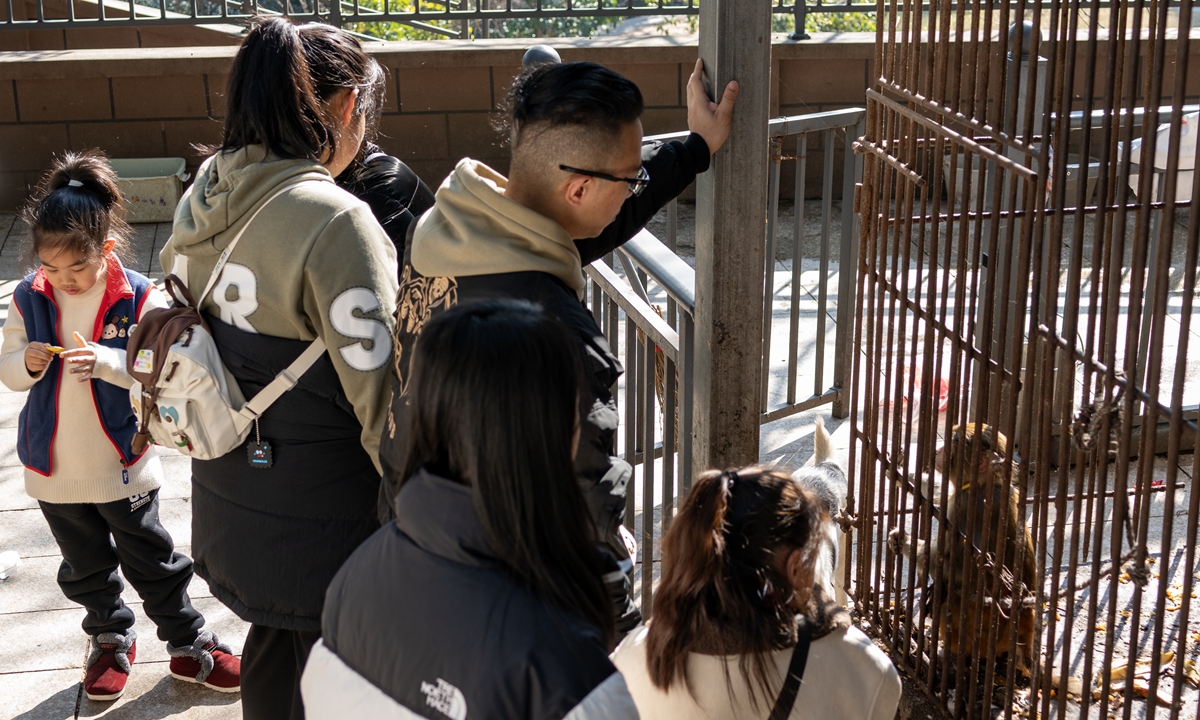
Some children visit a local small private zoo in Enshi, Central China's Hubei Province, under the accompany of their families on Fabruary 11, 2024. Photo: VCG
Rising regulatory standards Many domestic wildlife parks are privately owned, meaning that the main purpose of the investors in establishing and operating these parks is for profit. The fact is that there remain blind spots and loopholes in the regulation of the business activities of these enterprises by government departments, Sun noted.
If something goes wrong in a public zoo, local authorities take responsibilities and actions. In contrast, China's regulatory measures and management framework for private wildlife parks and zoos are relatively weak. The responsibilities of relevant departments need to be further clarified and defined, according to Sun.
Sun contends that advanced zoos should be not only centers for science education, animal research, and conservation, but should also actively participate in wildlife rescue and endangered species conservation efforts, helping wild animals return to their natural habitat.
Then what should we do with those venue who do not meet the standard of "advanced zoos?"
"They should all be closed," according to Zhou Jinfeng, secretary-general of China Biodiversity Conservation and Green Development Foundation, as reported by thepaper.cn when asked the same question.
"The zoo is a product of human civilization. The initial purpose of zoos in various places was basically to make money, for tourism, and entertainment. Only recently did people add a lot of popular science content to their scope, but in reality, the commercial attributes of zoos have not changed. The core purpose is still to make money," Zhou said.
As for other functions such as popularizing science, there are now ways to replace them. Therefore, small and medium-sized zoos, poorly managed zoos, zoos with conflicts and impacts on the environment and surroundings, and zoos that fail to consider animal welfare, should all be abolished. "Just like ancient gladiator arenas, there may be an empty shell, as a memorial hall, but the development path of this industry should be like this," he said.
As to how to deal with animals after zoos are closed, Zhou gave several directions: for wild animals, they can be released into suitable national reserves where they can live freely; for animals that are born and bred in zoos for many generations, they can undergo moderate wilding and observation programs, and be released at the appropriate time; a simple area could also be set up for them within the reserve areas, giving them time and space to adapt to the wild environment before ultimately being released.
National and regional animal protection departments and wildlife rescue stations can share part of the work. But overall, China still lacks experience in returning animals to nature at scale, according to Zhou.
Wang Shicheng, a zoo enthusiast in Nanjing who has visited 75 zoos in China, wonders if there is still hope for zoos in small and medium-sized cities to improve and exist for a longer time before they become historical arenas.
"Although the conditions of these zoos are not ideal, I want to show everyone their true face, after all, they are also important memories of life for the people in small places," Wang said.
Maybe these small zoos do not necessarily have to keep large animals like tigers and elephant. They can focus on raising smaller animals like foxes and wild boars, Wang said.
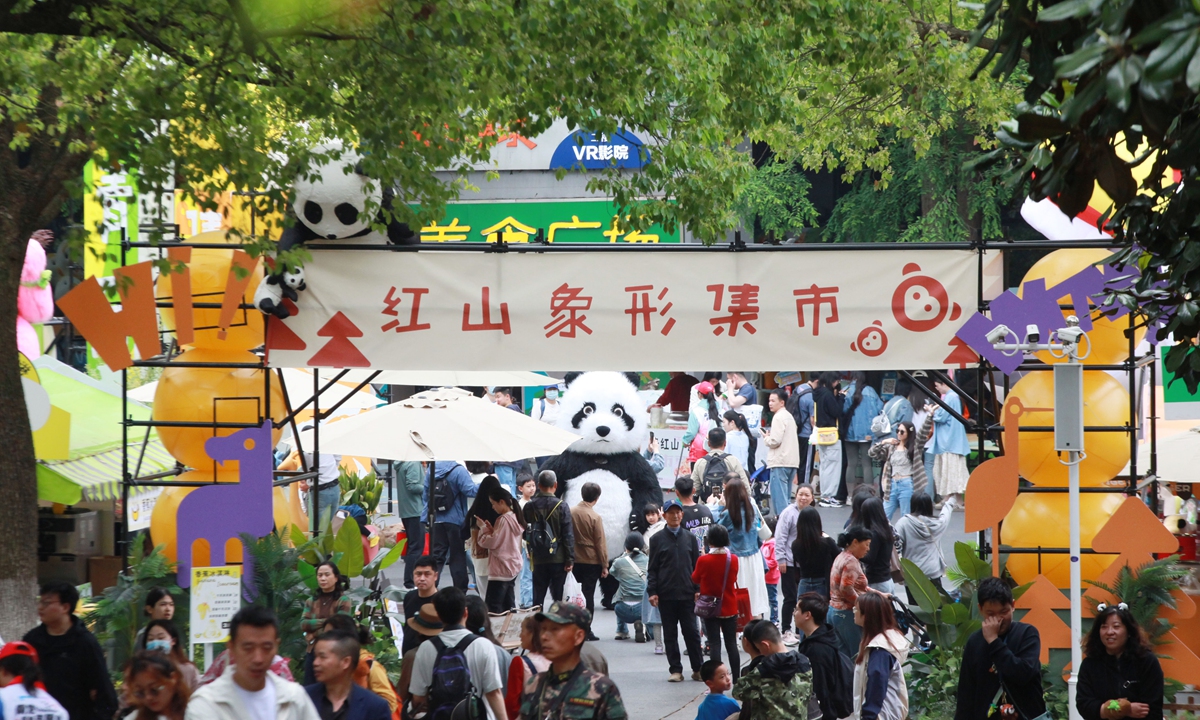
Hongshan Forest Zoo Photo: VCG
Where to go?Chinese zoos are working to remain relevant and up to standard as the entire industry pivots toward valuing customer experience and animal welfare. They are trying to avoid keeping animals in cages and focusing on the living environment of animals.
The Hongshan zoo in Nanjing is taking the lead in the direction. The zoo now has become popular among Chinese netizens for the wholehearted respect and love that employees have for the animals. During the recent May Day holidays, its visitor numbers rivaled those of Shanghai Disneyland.
Staff in the zoo always tell visitors, "At Hongshan, animals are the hosts, and everyone else is a guest. They have the right not to 'receive guests,' and we must remember not to feed the animals."
Every animal in the zoo has its own name. Information boards provide their ID photos, age of entry, personality differences, growth updates, and even obituaries. Based on this, the zoo further creates animal IP and develops cultural and creative products, which in turn boosts the zoo's income.
Regulators are also expected to restrict the construction of wildlife parks, and the approval of animal breeding permits for zoos will become more stringent over time. At the same time, the cultural and tourism investment companies established in various regions will upgrade and renovate traditional wildlife parks, experts said.
In the future, public zoos will prioritize social benefits, while private zoos need to balance ecological, social, and commercial considerations, Ge Lei, an expert from the China Tourism Association, was quoted by jiemian.com as saying.
"With China's achievements in ecological conservation and animal protection, wildlife sightings have become common. In the future, China may establish a number of national parks similar to the Maasai Mara in Africa, where people can observe animals in nature and experience the beauty of nature in its original form," Ge said.
The picture Ge laid out is what Xu sees as the future for the domestic wildlife zoo industry.
"And I know that many zoos in our country have been improving. They are providing better conditions to the animals, stopping, or at least reducing, animal performances and hiring professions who really understand, respect and love animals instead of treating them as tools to make money," Xu said. "Someday, I wish zoos can make me feel like being a guest in the animals' home rather than a visitor."
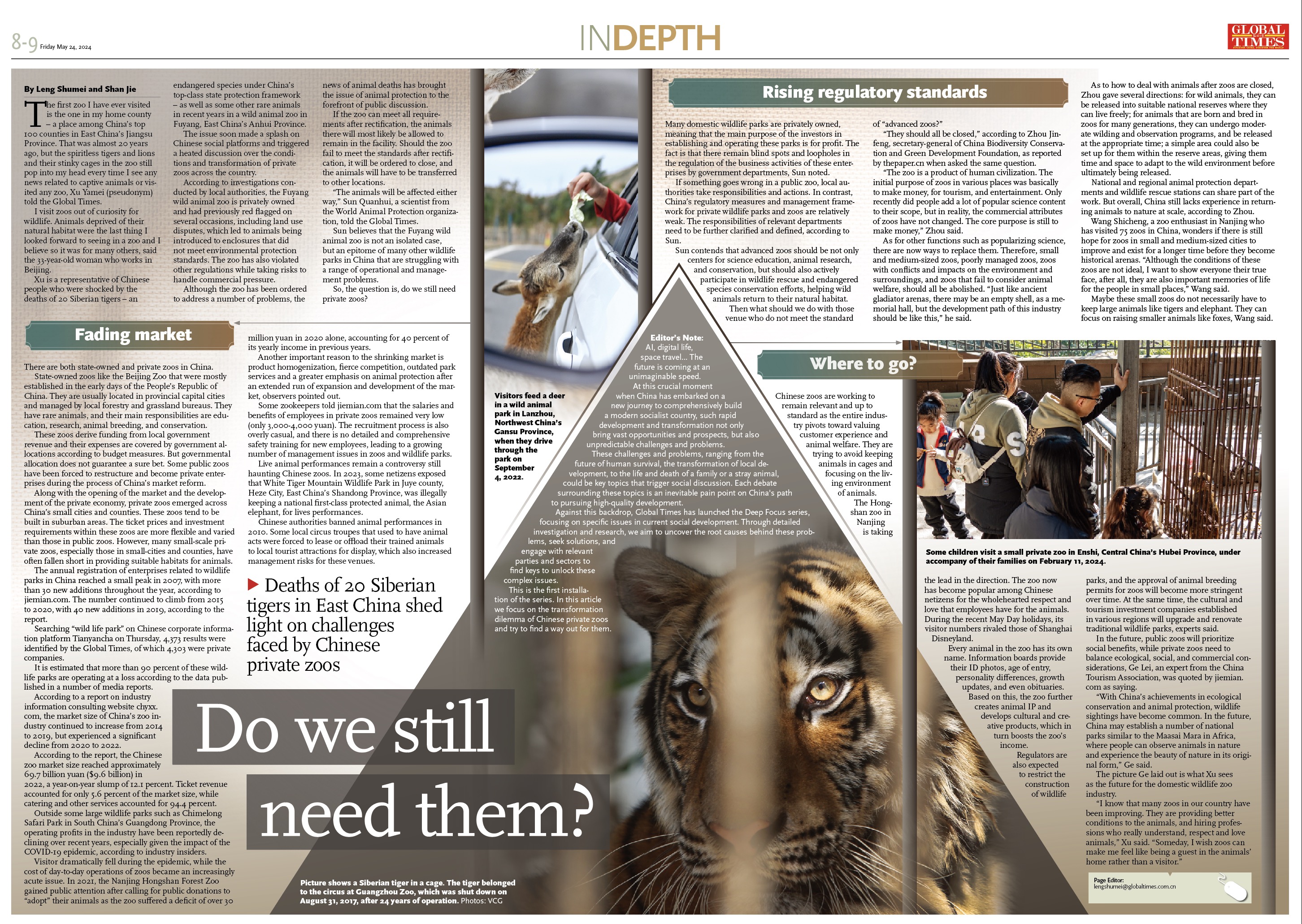
Do we still need them?








